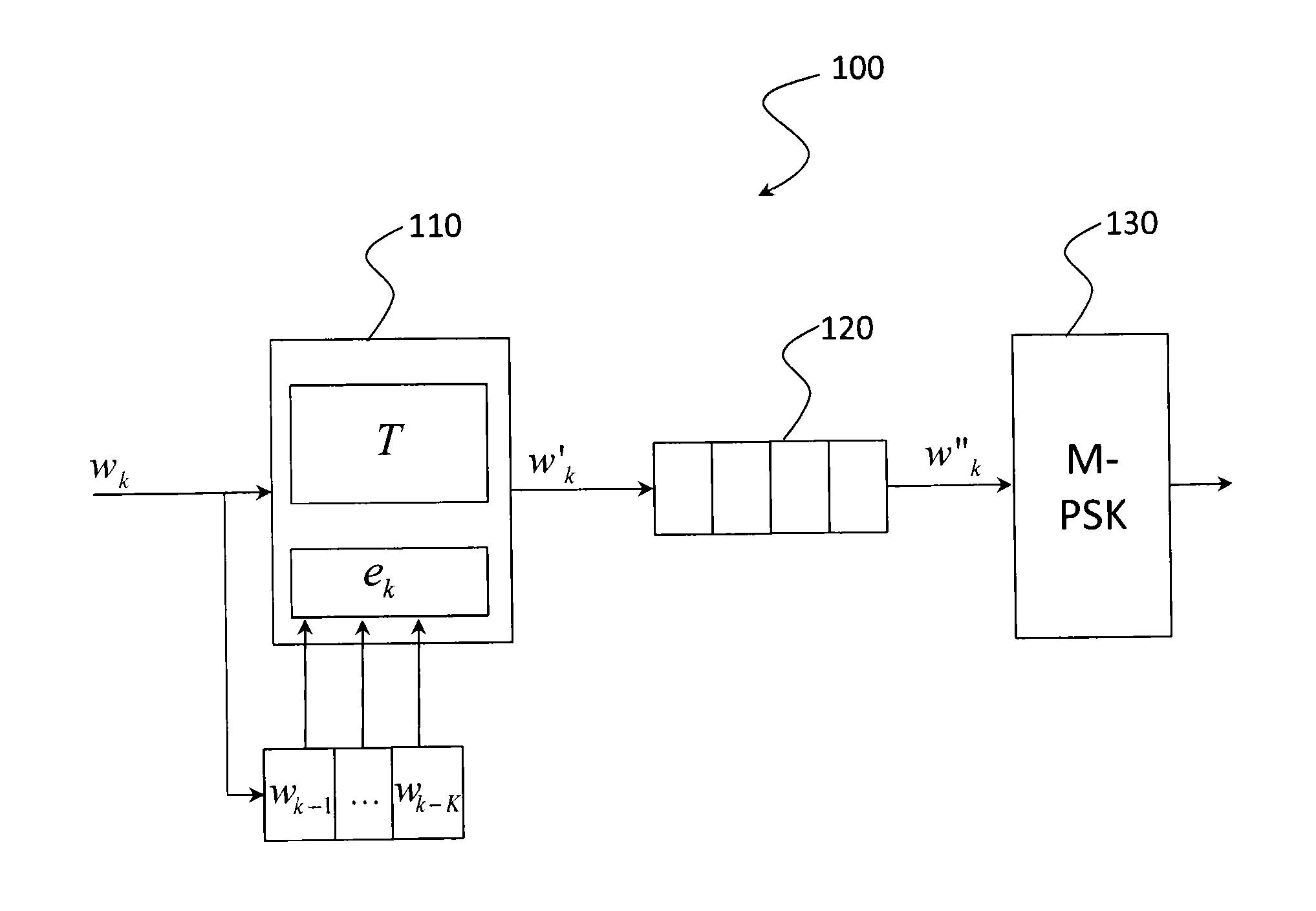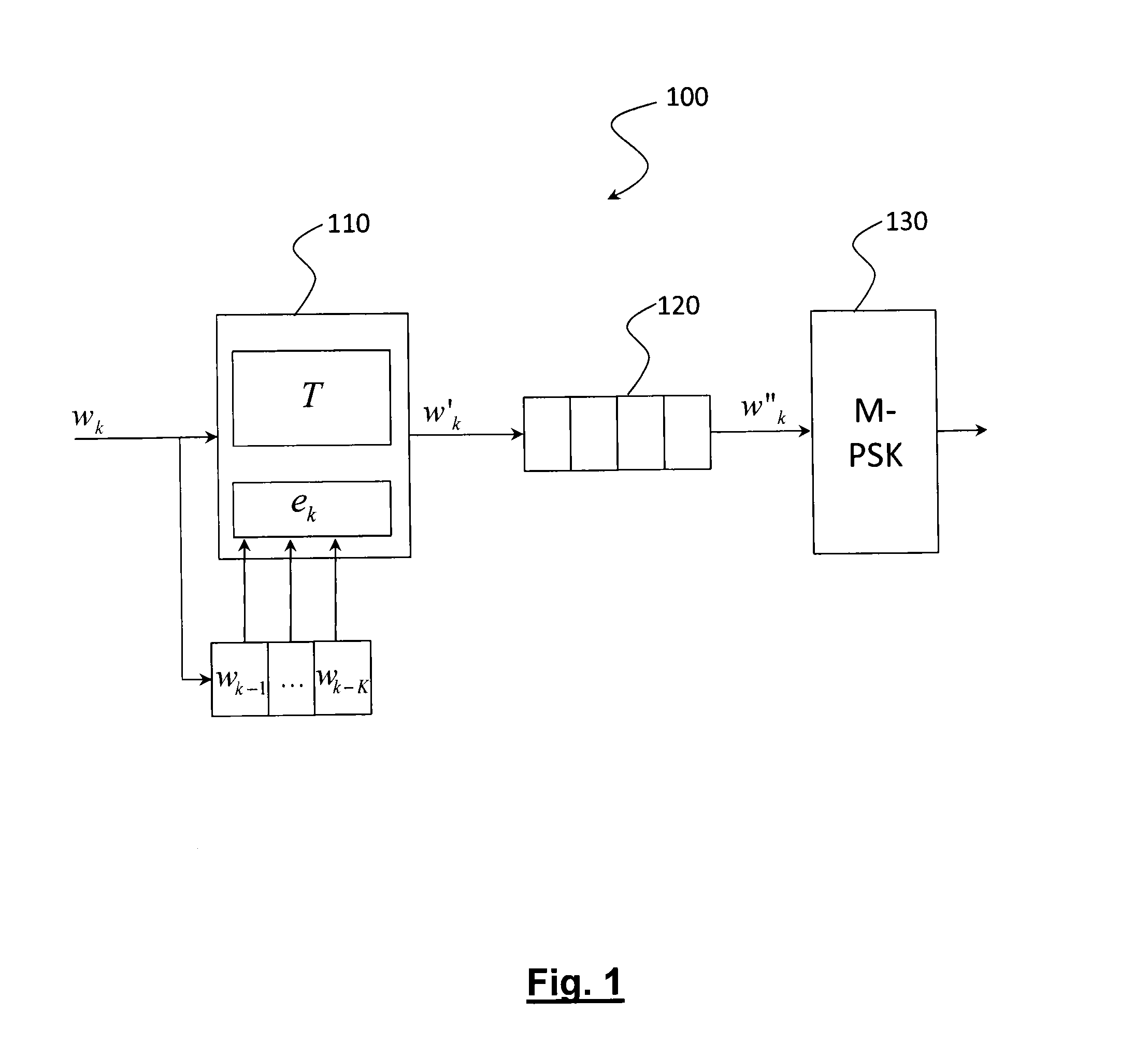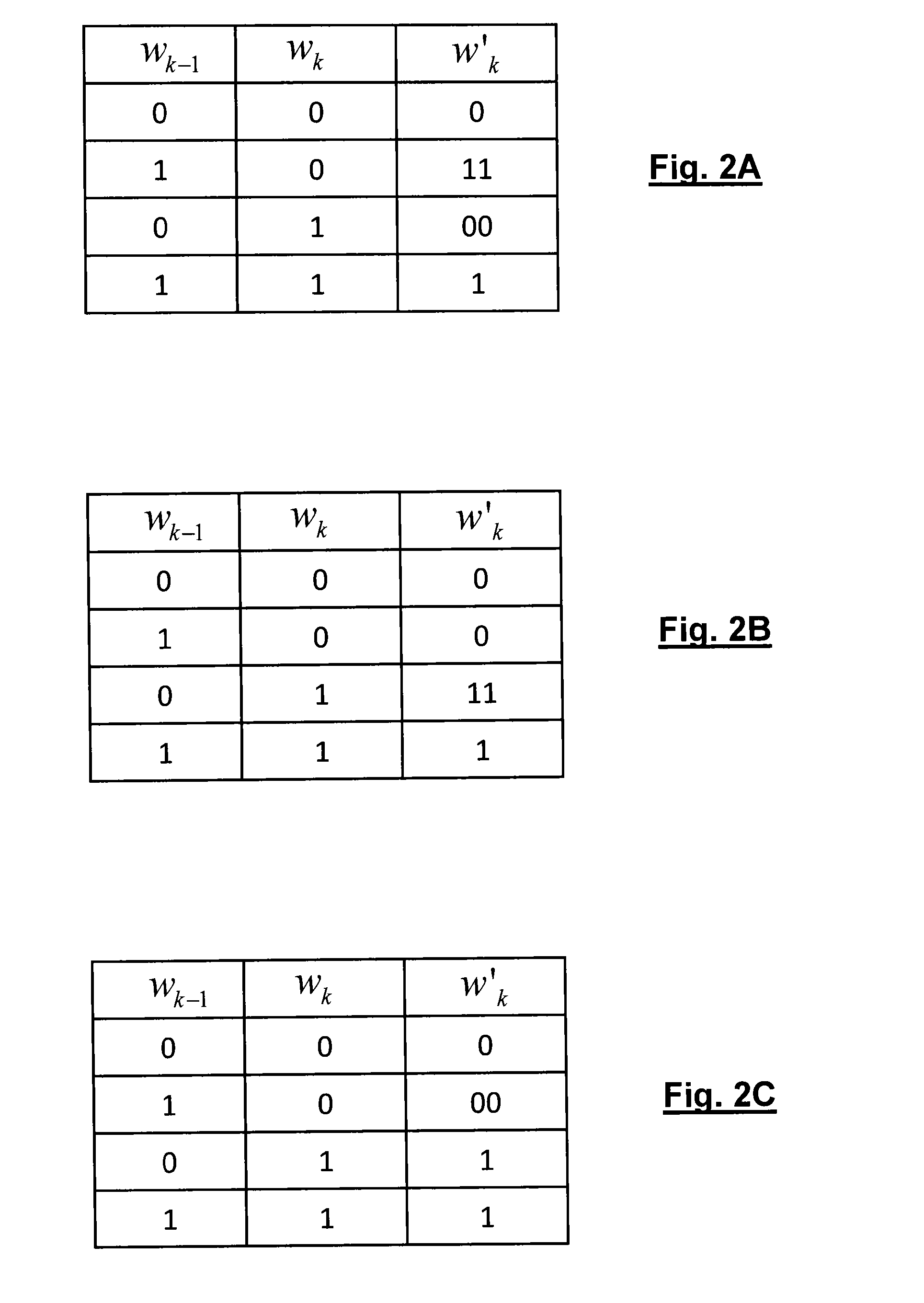Method and device for digital modulation with low transition density
a digital modulation and low transition density technology, applied in the field of digital modulation, can solve problems such as the increase of the binary error rate (ber) at the receiver
- Summary
- Abstract
- Description
- Claims
- Application Information
AI Technical Summary
Benefits of technology
Problems solved by technology
Method used
Image
Examples
first embodiment
[0033]FIG. 1 represents in a schematic manner a digital modulation device according to the invention;
[0034]FIG. 2A represents a first example of transcoding table for the digital modulation device of FIG. 1 when the input words are of 1 bit;
[0035]FIG. 2B represents a second example of transcoding table for the digital modulation device of FIG. 1 when the input words are of 1 bit;
[0036]FIG. 2C represents a third example of transcoding table for the digital modulation device of FIG. 1 when the input words are of 1 bit;
[0037]FIG. 3A represents a fourth example of transcoding table for the digital modulation device of FIG. 1 when the input words are of 2 bits;
[0038]FIG. 3B represents a fifth example of transcoding table for the digital modulation device of FIG. 1 when the input words are of 2 bits.
second embodiment
[0039]FIG. 4 represents in a schematic manner a digital modulation device according to the invention;
[0040]FIG. 5 represents a sixth example of transcoding table for the digital modulation device of FIG. 4.
PUM
 Login to View More
Login to View More Abstract
Description
Claims
Application Information
 Login to View More
Login to View More - R&D
- Intellectual Property
- Life Sciences
- Materials
- Tech Scout
- Unparalleled Data Quality
- Higher Quality Content
- 60% Fewer Hallucinations
Browse by: Latest US Patents, China's latest patents, Technical Efficacy Thesaurus, Application Domain, Technology Topic, Popular Technical Reports.
© 2025 PatSnap. All rights reserved.Legal|Privacy policy|Modern Slavery Act Transparency Statement|Sitemap|About US| Contact US: help@patsnap.com



